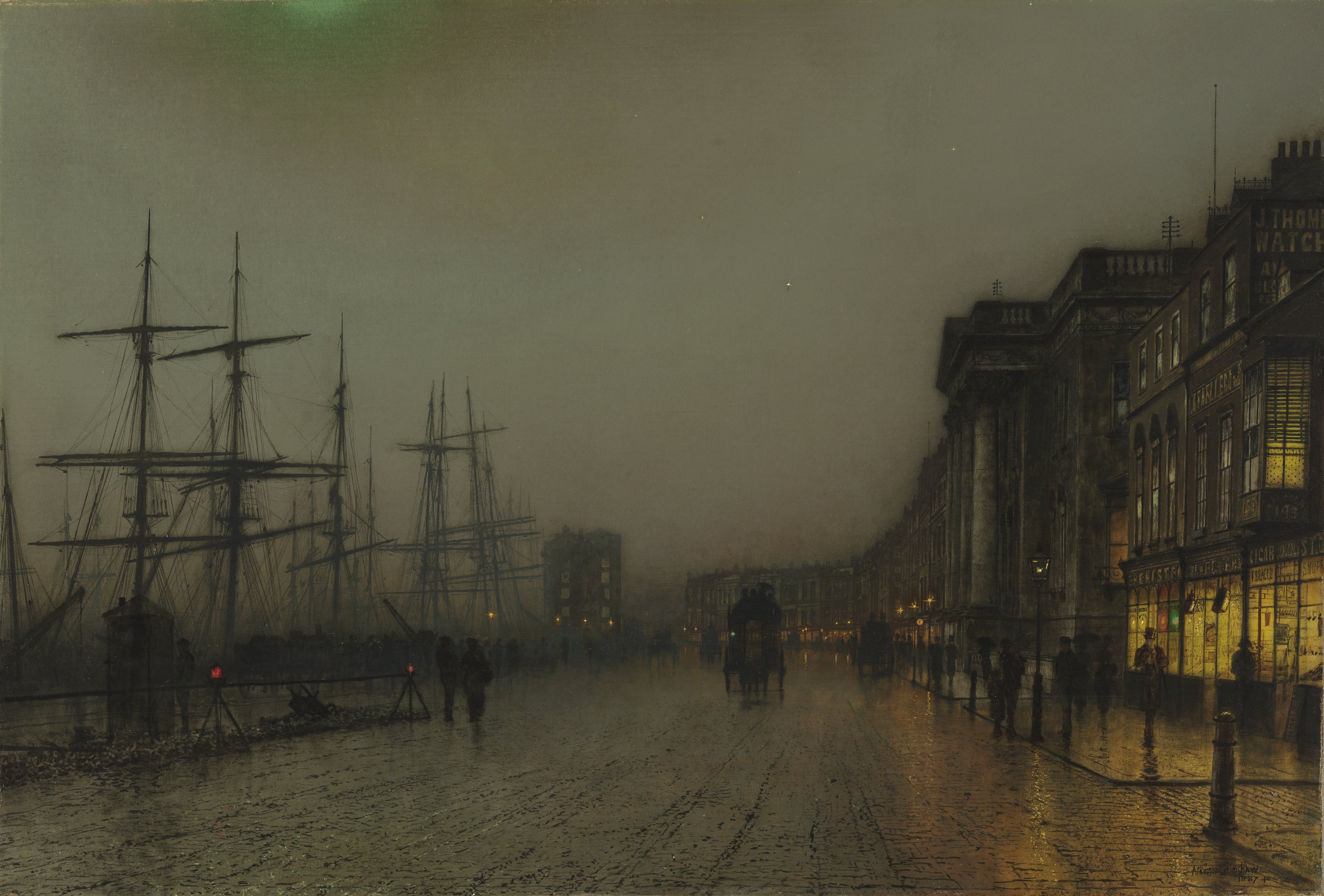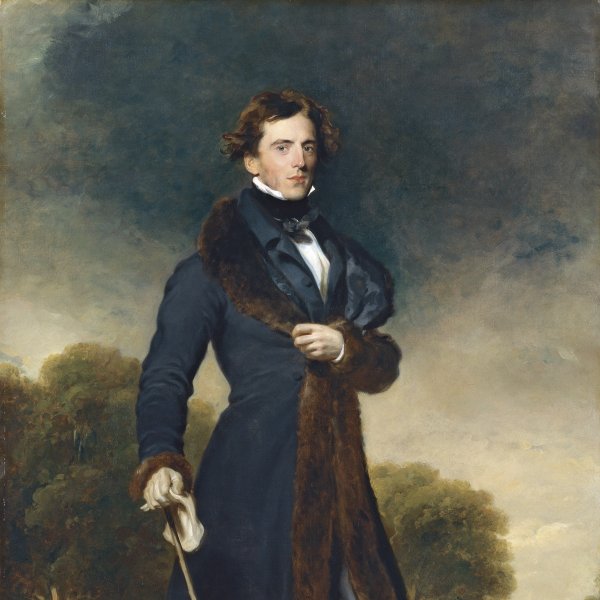'Canny Glasgow'
This painting is one of the later works of John Atkinson Grimshaw, who devoted his life to painting, who believed: "Music (except composing) is ephemeral-Art (painting and so on) is eternal-relatively speaking."
In the early 1880s, J. A. Grimshaw became increasingly prolific, and he began to examine new subjects, widening his scope to include paintings of the Thames, urban centres and a larger number of dock scenes.
His paintings of this period were extremely popular, favoured for their accurate evocation of late Victorian England, and there was a large waiting list for his work. The dock scenes were in such great demand that a Liverpool art dealer called Jackson told Grimshaw that he would buy as many as he could paint.
Throughout the 18th century Glasgow had developed to become the second largest town in Scotland, after Edinburgh. Large investments in town planning and architecture were made, in developing the New Town, which aimed to eradicate the inconvenient remnants of the medieval town. The River Clyde was notoriously shallow and it did not allow for substantial shipping vessels to travel as far up river as Glasgow. In 1770, as part of the civic improvement programme, the civil engineers John and James Golborne initiated the first phase of a prolonged project to widen and deepen the River Clyde, to make it more accessible for large trading vessels. This enlarged Glasgow's status as a large trading port accordingly, and by the 19th century it was the leading port in Scotland.
This painting captures the unique 19th-century clamour and atmosphere of the dockside in Glasgow, with the masts and rigging of the ships creating linear patterns in the sky: "The rigging has a rich, smudgy feel, where lines sink into the background surface. The skyline and distance are hazy with enveloping gloom, every the mud on the road is painted with care so that it catches the light from the lamps and shop windows. The usual Grimshaw figures and carriages also seem fresh and spontaneous images. Here the artist has created a rare sense of place and time, a scene of modern life which yet has a quality of distance and mystery."
Canny Glasgow is a wonderful piece of history-a visual record of the life and work of the citizens of 1887. It perfectly captures Grimshaw's own approach to Nature and art, which is encapsulated in Whistler's words from his Ten O'Clock Lecture: "And when the evening mist clothes the riverside with poetry, as with a veil, and the poor buildings lose themselves in the dim sky, and the tall chimneys become campanili, and the warehouses are palaces in the night, and the whole city hangs in the heavens, and fairy-land is before us-then the wayfarers hasten home; the working man and the cultured one, the wise man and the one of pleasure, cease to understand, as they have ceased to see, and Nature, who, for once, has sung in tune, sings her exquisite song to the artist alone, her son and her master-her son in that he loves her, her master in that he knows her [...]".
Nicole Ayton





